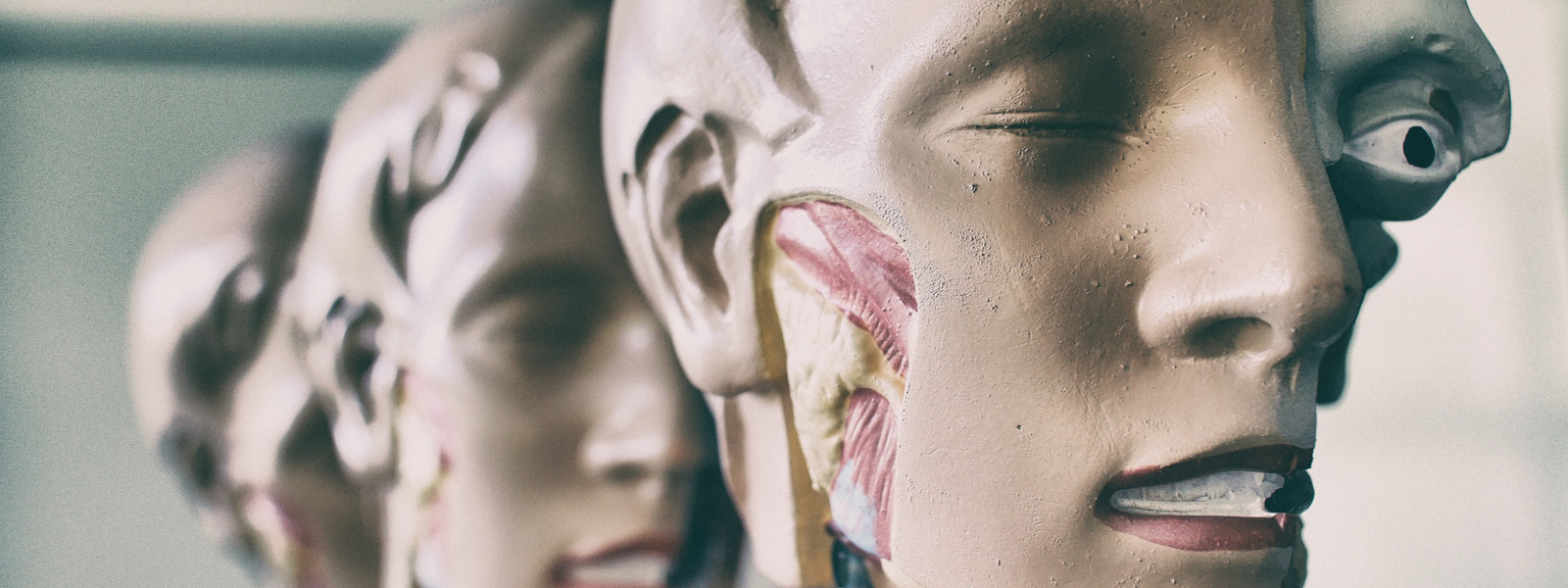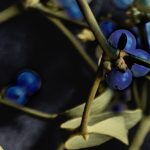There are one hundred and fifty students in the room, seven to a body. Unsure where and how to stand, they keep a cautious distance. In time, they will cleave to their cadavers like petals.
The students expect the dissecting room to be cold and some have arrived with jumpers under their coveralls. Many are sweating already and three per cent are likely to faint. Eleanora did not wear a jumper and she is strong of stomach. And yet, a spangling grey edges her vision.
It’s the smell that’s troubling her. The thickness of it, the familiarity of the notes and the overwhelming otherness of their combination. Each breath makes her feel as though it’s her lungs that are being preserved. How childish, how unscientific. She inhales the thought away.
Her name is called and she stands with six others. Once the entire room has been divided, they are introduced to their bodies. Eleanora’s group is directed to a woman who has a cloth obscuring her face and they are told this will stay there throughout the year. Many other groups have been assigned bodies with uncovered faces and Eleanora is disappointed.
It is the first day of dissection and while the tables and workspaces are pristine, the bodies on them are not. All are swollen from the preservation process, most are old, they sag, they are strange colours, they have hairs in places they might not want people to know about. Eleanora’s group is lucky. Their body has nothing obviously disgusting for them to contend with, no growths, no skin afflictions. Short, neat hair that once held a curl.
She doesn’t know it now, but Eleanora will come to love this body. She will give it a name. A private one, not the one the seven students (soon to become six, it turns out Frank is better suited to a desk-based role) decide on. The group votes on Robin, for the small tattoo perched on one shoulder blade. Eleanora is unimpressed by this reasoning and silently names her Gwyneth. Gwyn for short.
The majority of the students are standing silently. A handful have begun to laugh (they can’t help themselves). A few are crying. The sight of their tears summons a sting to Eleanora’s nose but she scrunches it away. She is here to learn.
After the first day, the students will grow looser. Sometimes, they’ll catch themselves chatting about nothing – the weather, TV shows, their favourite biscuits – as they wait to disinfect an instrument or collect a worksheet. They’ll stop and clear their throats, looking to see who has clocked their callousness. After long enough, they’ll carry on regardless.
Some have to fight the sickly sensation that when moving an arm or righting a leg, they are touching their own grandparents. Eleanora will not have this problem. Gywn is not quite middle aged.
There will, however, be a moment within the first few months when Eleanora fears the bodies might become indistinct. She remembers the moulded soaps she collected as a child, which slowly lost their scent and their shape until they all smelled and looked alike. But there’s no sun to bleach anything in this room and when the worry comes, she hunts out freckles and bumps and old surgery scars to remind herself of each body’s history.
Gwyn has little in the way of distinguishing features, but there is a pooch below her belly button that suggests she carried a child and her ring finger has no tan line. There is the tiniest chip of fuchsia varnish on the nail of her left big toe and Eleanora will often have an urge to nip into Boots on her lunch break and come back with a bottle. The rest of the group would notice though, and nail painting is undoubtedly forbidden.
The students are not meant to add to the bodies and even though half of their training is to learn to remove, nothing can be permanently taken away. At the end of the year, each table will be audited and every single scrap of tissue will be accounted for. The bodies must go to their coffins with every part present.
Then there will be a funeral, which none of students can imagine yet. The third years have shared horror stories; family members who never agreed with the decision to donate; children who thought they were going to see their parent one last time; the confusions and conflicts caused by a celebration of life that takes place a whole year after death.
She wouldn’t think so now, but Eleanora will attend the funeral and even though she’ll look after this body better than she does her own, the lecturer’s thank you speech will drive her wild with guilt.
Gwyn gifted her body for training and decided – whether from modestly, vanity or fear – to keep her face and the memories etched on it to herself. It’s a choice the students agreed to respect but on the last night of term Eleanora will find herself crying at the thought she’ll never slice or pat or sing under her breath to this body again. As she sniffles, she’ll lift the cloth to say goodbye.
Eleanora will stare at Gwyn’s slackened features for a long and impermissible moment that can’t ever be taken away, or given back. And in the quiet, crowded room, she’ll learn that despite all of their intimacies, she never knew this woman beyond her body.
Regret will etch itself into a small line between Eleanora’s eyebrows, a signpost to her history, one nobody will be able to correctly decipher.
…
Biography
Lynsey May lives, loves and writes in Edinburgh. Her short fiction has been published in various journals and anthologies, including The Stinging Fly, Gutter and Banshee. She’s never far from a cup of coffee and her bag is always too heavy. lynseymay.com @LynseyMay
Image: unsplash.com





